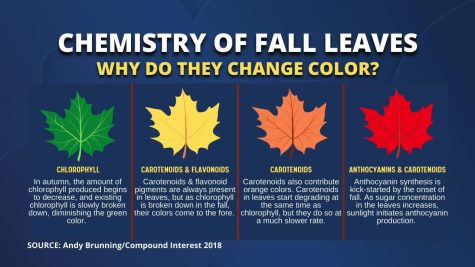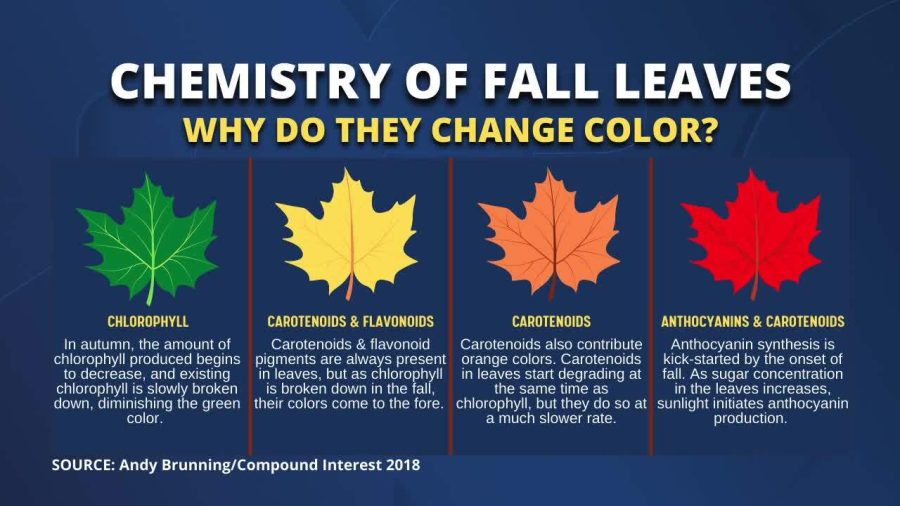This is the chemistry describing how the leaves change in the fall Photo by: 23ABC News
The real reason that leaves change in the fall
As the hot summer comes to an end the weather starts to cool down and the length of daylight changes. The trees in our yards start to prepare themselves for winter. They do this by taking
the nutrients from the leaves to be able to reproduce more beautiful leaves next year.
The Longer Nights.
To take you back to science class, chlorophyll is a pigment in plants that give them the beautiful green colours. The job of chlorophyll is to absorb energy from energy from sunlight. This energy is then used by the pants to produce food. As the night gets longer and the days get shorter, chlorophyll production slows down and eventually stops causing the leaves to lose the green pigment. The carotenoids and anthocyanin that are present in the leaf are then unmasked and show their colours.
How does the weather affect autumn colours?
During the crisp and cool days of fall, lots of sugars are produced in the leaves of plants. However, these cool nights that lead to the closing of the veins in the leaves do not allow the escape of the sugars to the rest of the plant. These conditions lead to the spur production of the brilliant anthocyanin pigments, which tint leaves reds, purples, and crimson. The vibrant yellow and gold colors are explained by the constant presence of carotenoids.
SOURCE

Photo by: 23ABC News
(23ABC News )

